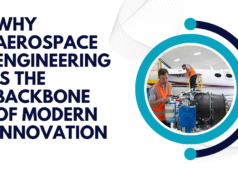In today’s fast-paced world, businesses across various industries are constantly seeking ways to enhance operational efficiency and reduce costs. One of the key advancements in manufacturing and production is the innovation in liquid filling technology. This revolutionary technology has transformed the packaging process, bringing substantial improvements in both efficiency and precision.
In this article, we will explore how liquid filling technology is reshaping industries, from food and beverages to pharmaceuticals, and why it is essential for businesses looking to stay ahead in a competitive market.
What is Liquid Filling Technology?
Liquid filling refers to the process of dispensing a specified amount of liquid into containers, such as bottles, cans, jars, or pouches. This technology is used in industries that require packaging liquids, such as beverages, chemicals, cosmetics, and pharmaceuticals. The filling process can be manual or automated, with the latter offering greater speed, precision, and consistency.
The Key Benefits of Liquid Filling Technology
- Increased Packaging Efficiency
Liquid filling technology has significantly enhanced the efficiency of the packaging process. Automated systems are capable of filling a large number of containers in a very short time. This not only increases productivity but also minimizes labor costs and human error. With the precision of automated liquid filling machines, businesses can achieve faster turnaround times and meet growing demand without compromising quality.
- Enhanced Accuracy and Precision
Precision is critical when it comes to liquid packaging. Under-filling or over-filling containers can lead to costly waste or potential product recalls. Advanced liquid filling machines are designed to measure exact amounts of liquid and dispense them with pinpoint accuracy. These systems use a variety of methods, such as volumetric, gravimetric, and piston filling, to ensure that each container receives the correct amount of liquid every time.
- Consistency Across Large Batches
Whether you’re producing thousands of units per day or smaller batches, liquid filling technology ensures that the final product maintains consistent quality. This level of consistency is vital for maintaining brand reputation and customer trust. With automated systems, companies can rest assured that each product is packaged identically, reducing variations that could affect consumer experience.
- Versatility Across Industries
From beverage companies filling water, juice, or soda bottles to pharmaceutical manufacturers packaging syrups or tinctures, liquid filling technology is highly versatile. There are different types of liquid filling machines tailored to specific liquids, whether they are thin, thick, or viscous. Some systems are designed to handle hot liquids, while others are optimized for carbonated or non-carbonated beverages. This adaptability makes liquid filling a vital tool in nearly every packaging sector.
- Reduced Material Waste
When filling liquids into containers, accuracy is not only a matter of precision but also cost-effectiveness. Wastage of materials due to improper filling can lead to significant losses. Automated liquid filling systems, on the other hand, are engineered to minimize spillage, drips, and overflow, helping businesses reduce material waste and enhance profit margins.
- Compliance with Industry Standards
In regulated industries like pharmaceuticals and food, ensuring the correct amount of product in each container is a legal requirement. Liquid filling technology plays a crucial role in ensuring that manufacturers meet industry regulations, including those set by the FDA or ISO standards. With automated filling machines, companies can easily track and monitor the amount of liquid dispensed, making it easier to comply with stringent regulatory guidelines.
Types of Liquid Filling Machines
There are several types of liquid filling machines designed to meet the needs of different products and industries. Some of the most common include:
- Volumetric Filling Machines: These machines dispense a predetermined volume of liquid, ensuring consistency across all containers.
- Gravity Filling Machines: Ideal for thin liquids, these machines use gravity to fill containers, offering a simple yet effective solution for high-speed operations.
- Piston Filling Machines: These are often used for thicker or more viscous liquids, such as sauces or lotions, where gravity alone isn’t sufficient.
- Pump Filling Machines: These machines utilize a pump to dispense liquids with high precision, making them suitable for both thin and thick liquids.
Future Trends in Liquid Filling Technology
As technology continues to evolve, the future of liquid filling will likely bring even greater advances in automation and precision. Companies are exploring the integration of smart technology and artificial intelligence (AI) to further enhance the filling process. For example, AI could help machines learn and adapt to new products, improving their flexibility and reducing downtime.
Additionally, with growing sustainability concerns, the next generation of liquid filling systems may incorporate eco-friendly materials and processes. This could include minimizing energy usage, reducing plastic waste, and adopting recyclable packaging.
Conclusion
Liquid filling technology has undoubtedly revolutionized the way industries approach packaging. By offering increased efficiency, precision, and versatility, automated filling systems have become an indispensable asset for businesses looking to scale operations and meet consumer demands. As technology continues to advance, we can expect even more innovations in the field, making liquid filling an essential tool for the future of packaging.
If your business is looking to enhance its packaging processes and stay ahead of the competition, investing in the latest liquid filling technology is a step in the right direction. With its ability to streamline operations, reduce waste, and ensure high-quality products, it’s clear that liquid filling is here to stay as a game-changer in the packaging industry.










